Late Autumn's Golden Hour and Tonalist Bruce Crane
Click here to see this email on the web |  | Friday, October 28th, 2022 | | The Moodiest Fall Painting Ever | By Christopher Volpe | Share this article:     | 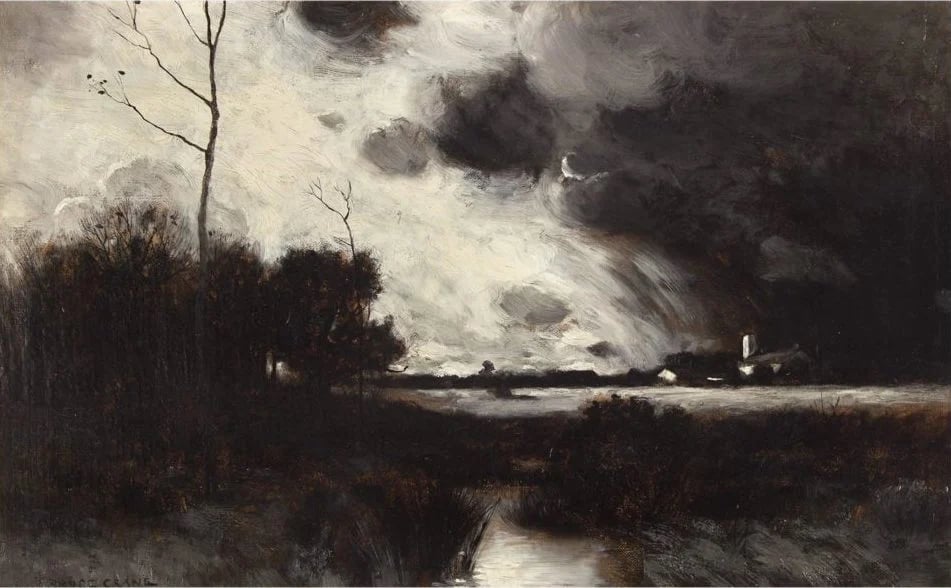 | Bruce Crane - Though it appears monochromatic, this landscape by Bruce Crane incorporates a deep brown umber and many tonal grays between black and white. | Of all the early 20th century American artists, Bruce Crane is probably the frontrunner for Most Likely to Paint a Poetic Late Autumn Tonalist Landscape. | 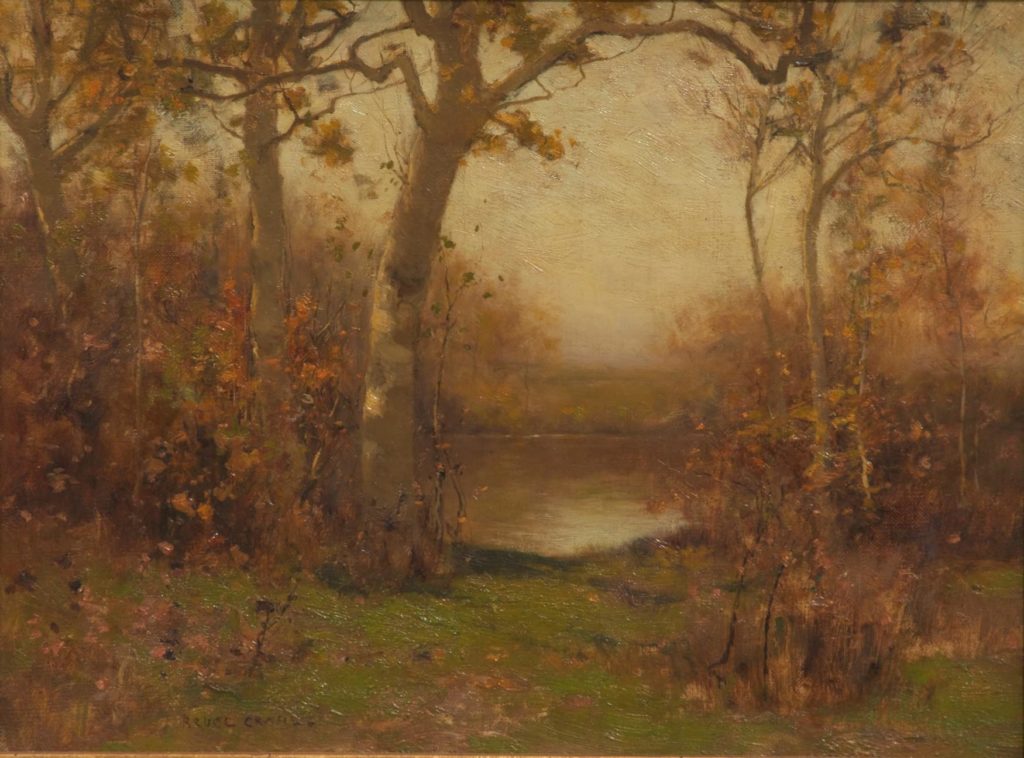 | Bruce Crane, one of dozens of Tonalist landscapes the artist created between the 1890s and 1920s. Robert Bruce Crane (1857 – October 30, 1937) | Crane learned his tonalistic approach from French landscapist Jean Charles Cazin (1841–1901), with whom he studied for a period. Cazin was a Salon painter with an eclectic background that included influence from the Pre-Raphaelites in England, an association with sculpture and ceramics, and the development of his own style of luminous landscape painting. | — advertisement — | 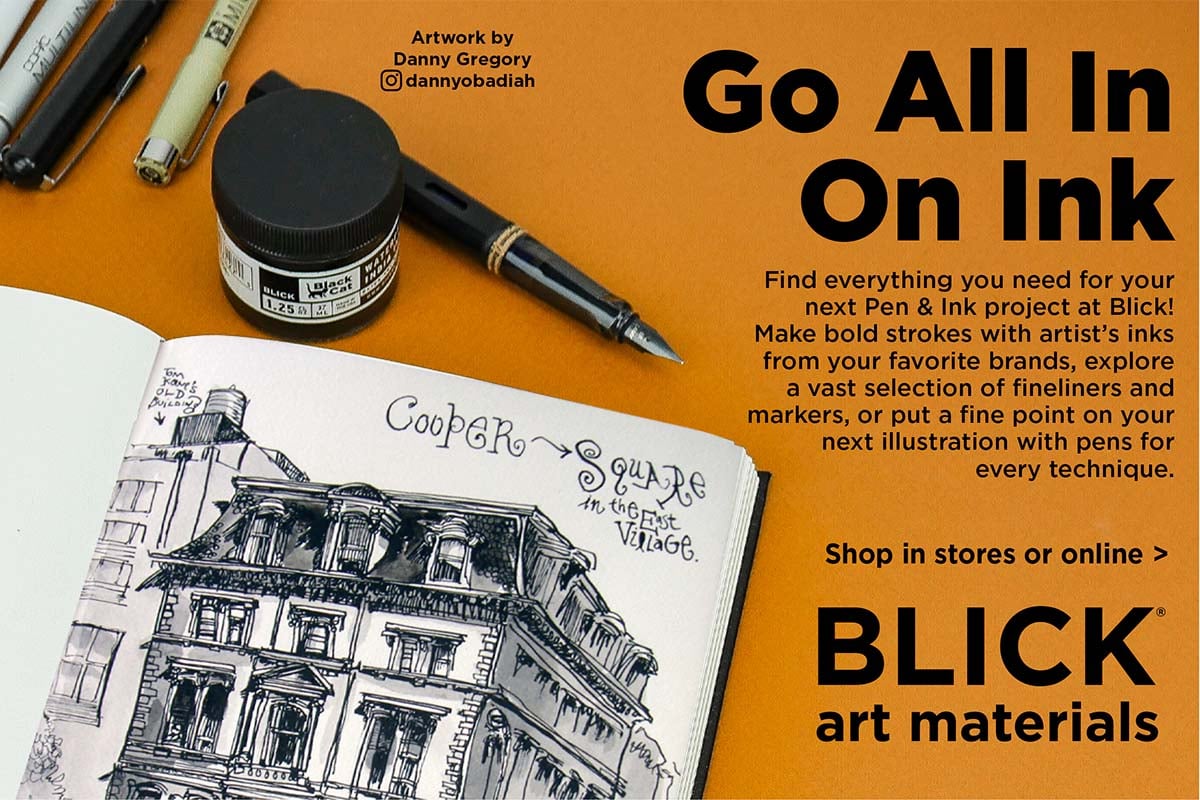 | 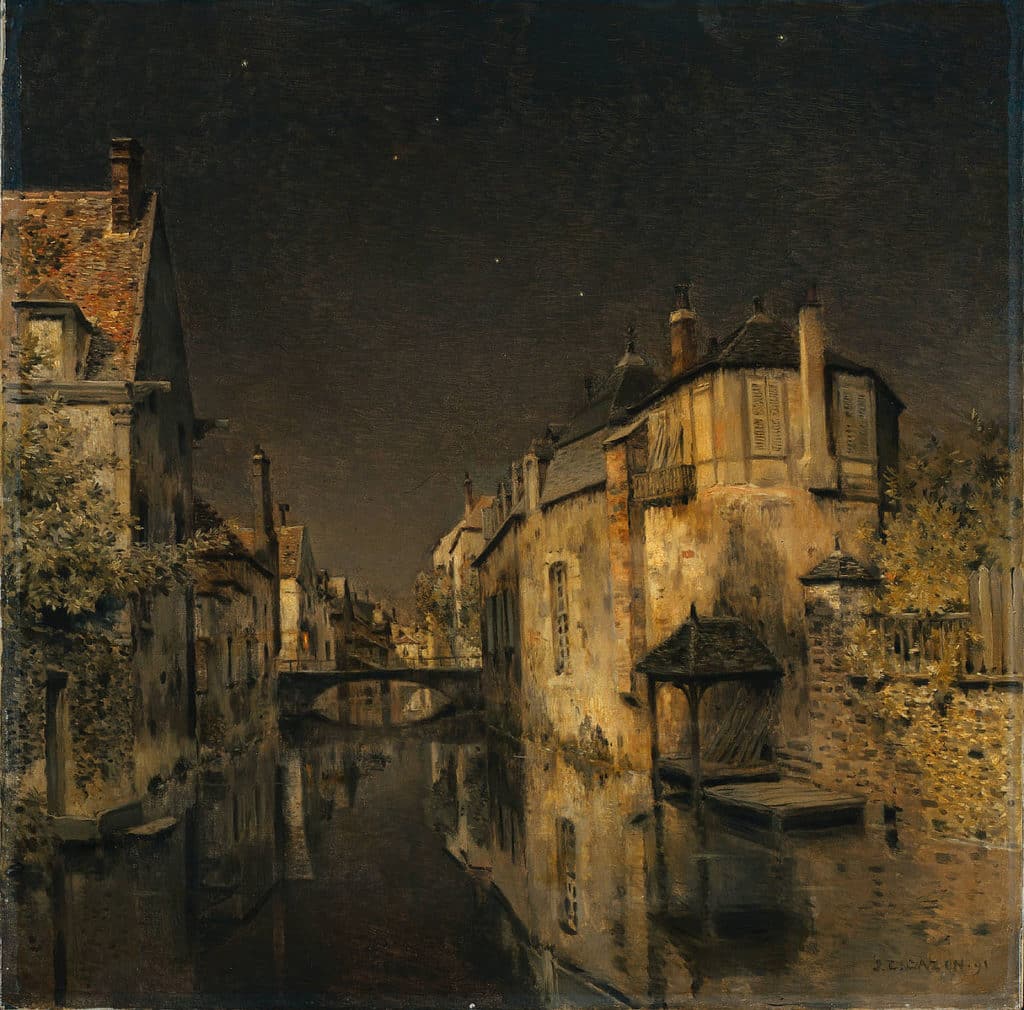 | Jean-Charles Cazin, Midnight, 1891, 88 × 89 cm (34.6 × 35 in) | Crane joined the Lyme Art Colony in the early 1900s. However, his most active period came after 1920, when for more than a decade he made modestly sized plein air lanescapes, often referred to as "oil sketches," of woods, meadows, and hills.
Crane's mature works were nearly always fall and winter scenes. He usually painted in his studio in Bronxville, New York, where like many of the Tonalists he relied mostly on memories of his outdoor sketching experiences to build simply arranged paintings that maximize mood and emotion. |
|
|
|
 | Bruce Crane, Late Autumn, 1910 | Though who knows which to pick, any number of Crane's best autumn paintings could be a candidate for the moodiest late autumn painting ever. Through mostly just value and atmosphere, he could elicit a wide range of feeling from super dramatic to incredibly subtle and subdued. | 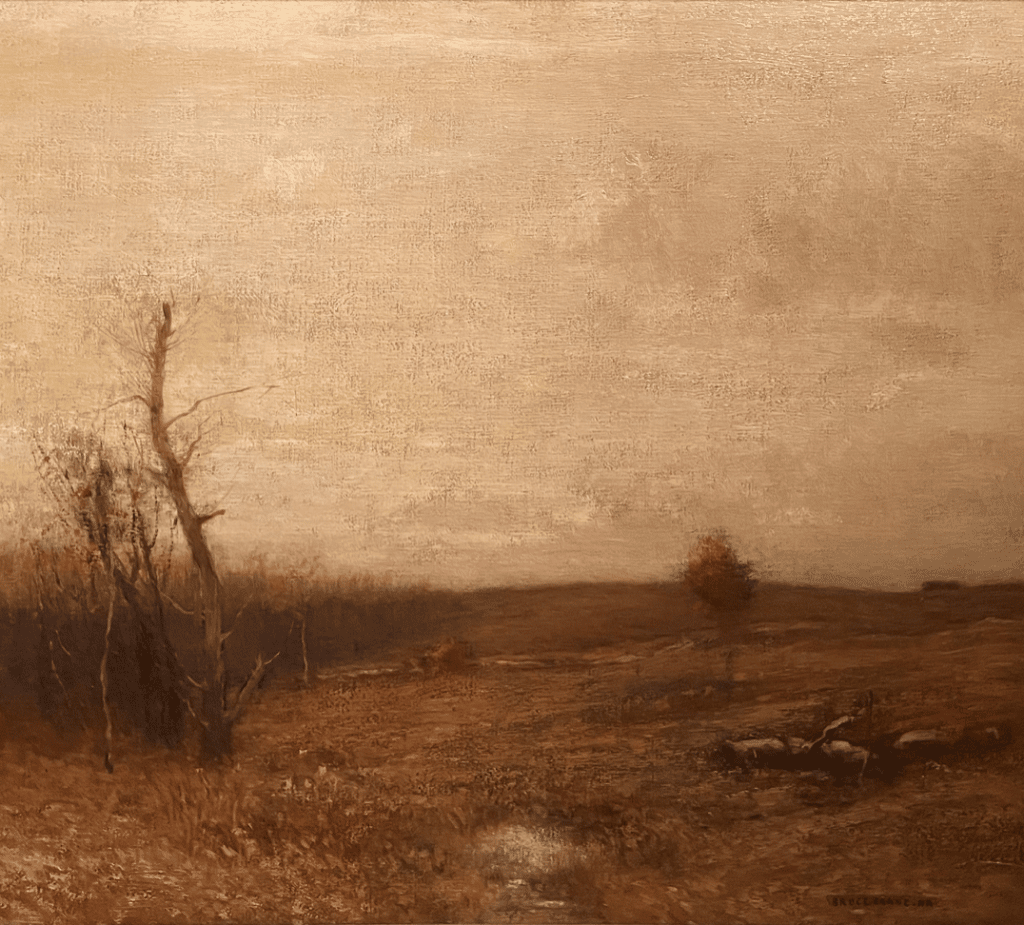 | — advertisement — |  | Crane often arranged his melancholy, Barbizon-influenced paintings with elements that eventually became the very hallmarks of Tonalist painting: a subdued, restricted color palette, an emphasis on atmosphere, an evening or late afternoon setting in a rural locale, some off-center mid-ground foliage masses, a few spindly backlit trees, and a small body of water to break up the foreground. |  | Crane's chosen time was often the "Golden Hour" of late afternoon. | 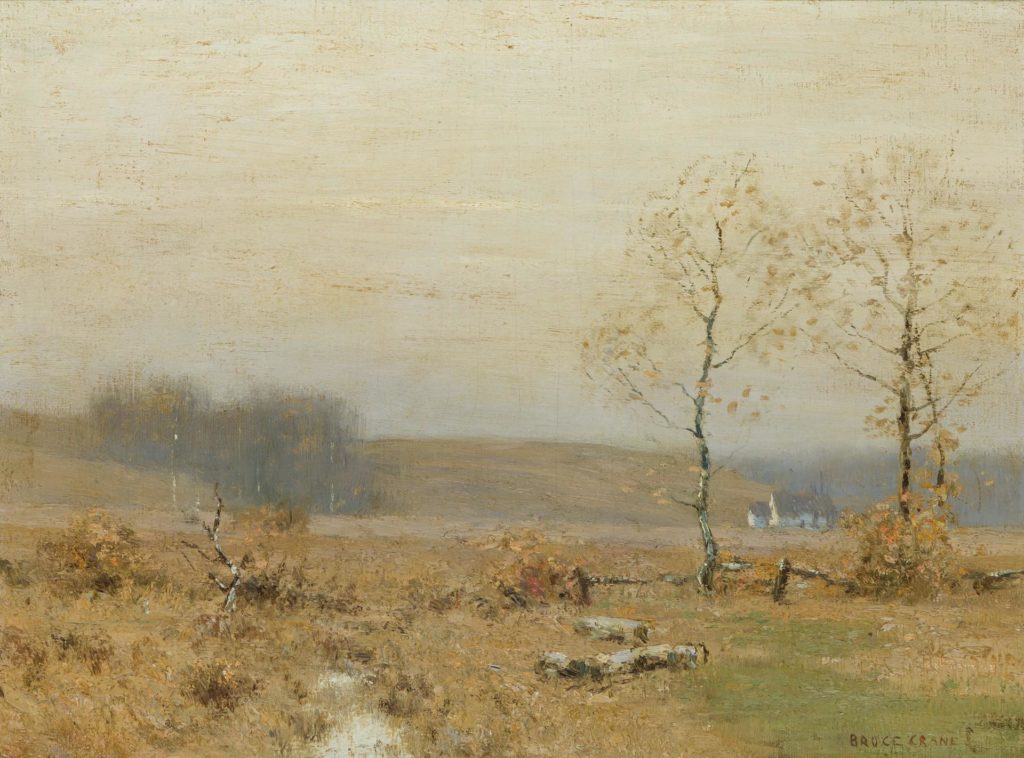 | And lest autumn melancholy overwhelm us utterly, here's one more Crane, this one in the key of Summer:
| 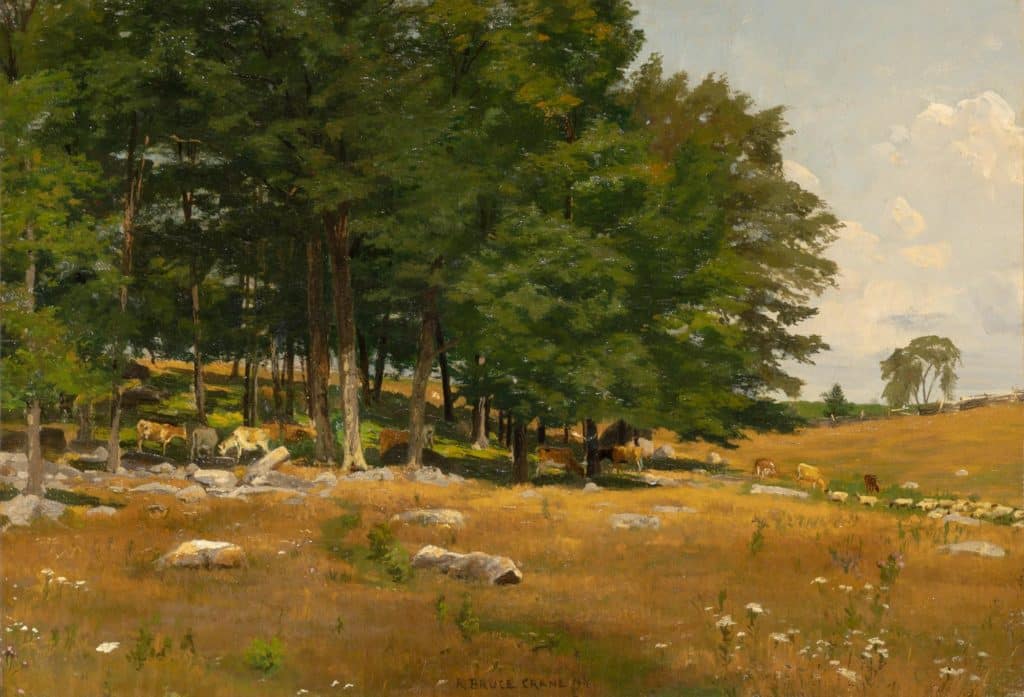 | If you're interested in adding a touch of tonalism to your toolkit, check out Mark Shasha's video, The Golden Hour. It isn't evening yet in Shasha's demonstration painting, but rather late afternoon, that softly lit, atmospheric period when the lowering but still high sun throws graceful shadows and glittering reflections gently over sand and sea.
|
|
| | |
|
Inside Art is committed to protecting and respecting your privacy. We do not rent or share your email address. By submitting your email address, you consent to Streamline Publishing delivering regular email issues and advertisements. To end your Inside Art e-mail subscription and associated external offers, unsubscribe here. To learn more about Streamline Publishing events, products, and offerings visit StreamlinePublishing.com
Copyright 2022 Streamline Publishing, Inc. All rights reserved.
Inside Art® is a registered trademark of Streamline Publishing, Inc. |
|
|
|
|









No comments:
Post a Comment